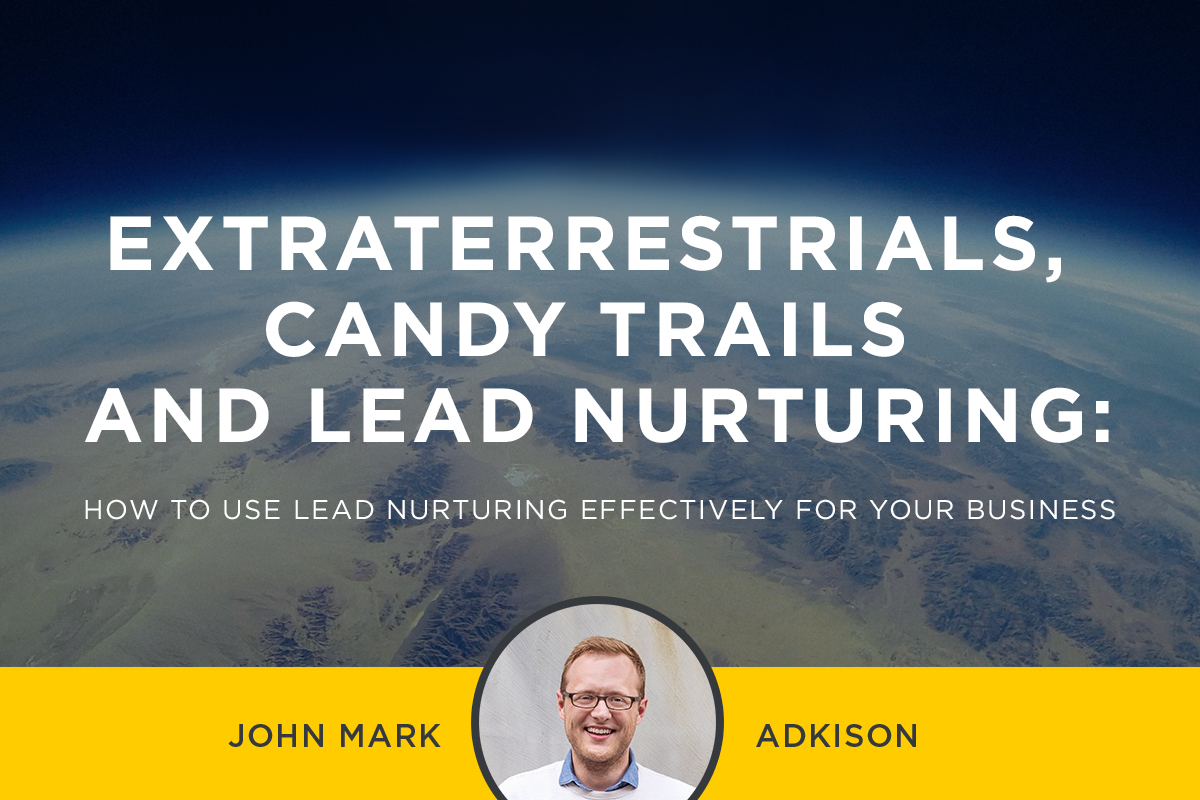Imagine: There’s an extraterrestrial hiding behind your house. You’re a 10-year-old named Elliot. So, naturally, you decide to cajole the alien out of hiding. You place a trail of Reese’s Pieces leading into the house. The next thing you know, you have a new best friend who can levitate bicycles and revive dead chrysanthemums.
Now imagine: There’s a whole database out there full of leads ready to be marketed to. You’re a business ready to turn those leads into customers. So, naturally, you decide to begin lead nurturing. But what exactly does that entail? And how do you avoid the mistakes of past marketing trends (i.e. mass email that quickly goes into spam)?
Well, let’s start by taking pointers from one of my favorite childhood movies.
What is Lead Nurturing?
Let’s start by defining a lead. A lead is someone who has shown interest in your company and has provided you with contact information (especially their email address). In its simplest form, lead nurturing is a lot like leaving a trail of Reese’s Pieces. You provide a series of well-timed pieces of content to your leads (via email) to keep their attention and interest, leading them down the sales funnel to become a customer.
In the past (and still used today), contacts were often purchased through large databases. Mass emails were sent out with all-caps subject lines and obnoxious designs, whether the lead wanted them or not. Eventually, the spam folder became a lot more advanced and beloved, eating up the annoying marketing ploys. With lead nurturing, you’re emailing content that is customized to the recipient’s interests and doesn’t barrage them with unwanted information.
How To Use Lead Nurturing (or How To Lay the Candy Trail)
A visitor comes to your website. They subscribe to your e-newsletter, register for your next webinar or download an ebook. Either way, you now know there’s an alien in the backyard, and by that I mean there’s a lead interested in your content. Now you can begin laying down the candy trail.
Customized emails are what make lead nurturing better than mass emailing. If they downloaded an ebook on how to escape nefarious government agents, you can send them a link to your ebook on how to phone home. If they download this content piece, then send them another email, perhaps a link to a webinar on how to pass the time when in quarantine with an ailing alien. The idea is to always send content that will be valuable to the lead.
With each new piece of content the lead interacts with, the lead acquires lead score points and provides your company with more information as they complete forms. Lead score points are based on how much value you place on a content piece (an infographic might be five points, whereas a 30-page ebook may be 20). When the lead acquires enough points, you can pass them on to your sales team.
And that’s how you get the alien out of the backyard and into the doorway.[Tweet “In it’s simplest form, lead nurturing is a lot like leaving a trail of Reese’s Pieces.”]
Benefits of Lead Scoring
- Timely. With lead nurturing tools, you can immediately contact a lead by email as soon as he/she provides contact information via an online form. No more non-customized, mass marketing emails that first hit leads days or weeks later.
- Automated. Once you set up an automated email workflow, emails are sent out automatically according to your schedule as new leads come in. This leads to a high return for a low investment, since you don’t have to manually send each email. Companies that automate lead management see a 10% or greater increase in revenue in 6-9 months (Gartner Research).
- More precise targeting. Studies show that targeted and segmented emails perform better than mass email communications. Lead nurturing enables you to tie a series of emails to a specific activity or conversion event. You can also send leads what they want to read/view based on their prior interactions with your site.
As you begin lead nurturing, remember it takes patience and constant attention to how your leads are behaving. Perhaps your leads aren’t Reese’s Pieces fans. Maybe they’re more into Hershey’s Kisses or Skittles. The key is to give them content they’ll find valuable, which in turn leads to more loyal customers. Just don’t expect them to put a glowing finger to your forehead and say “I’ll … be … right … here.”

